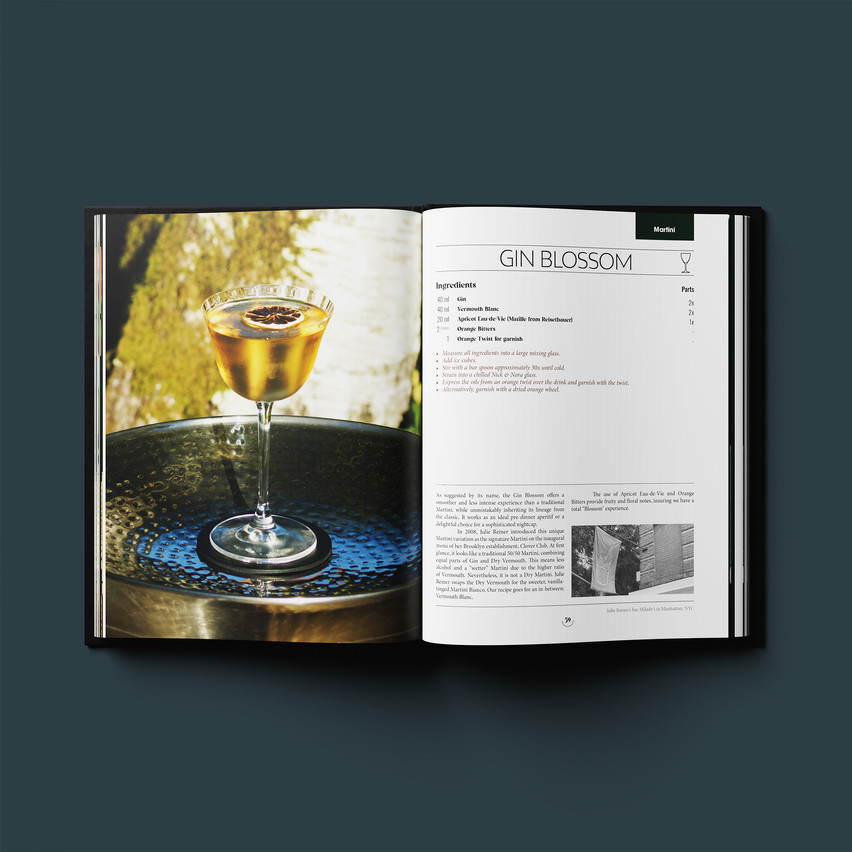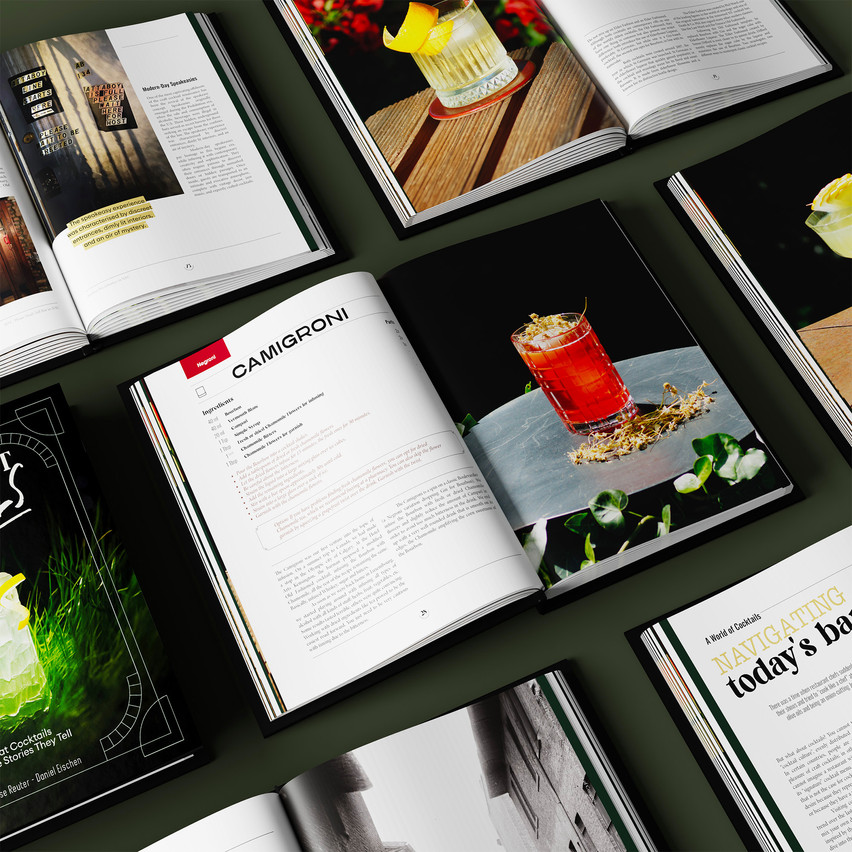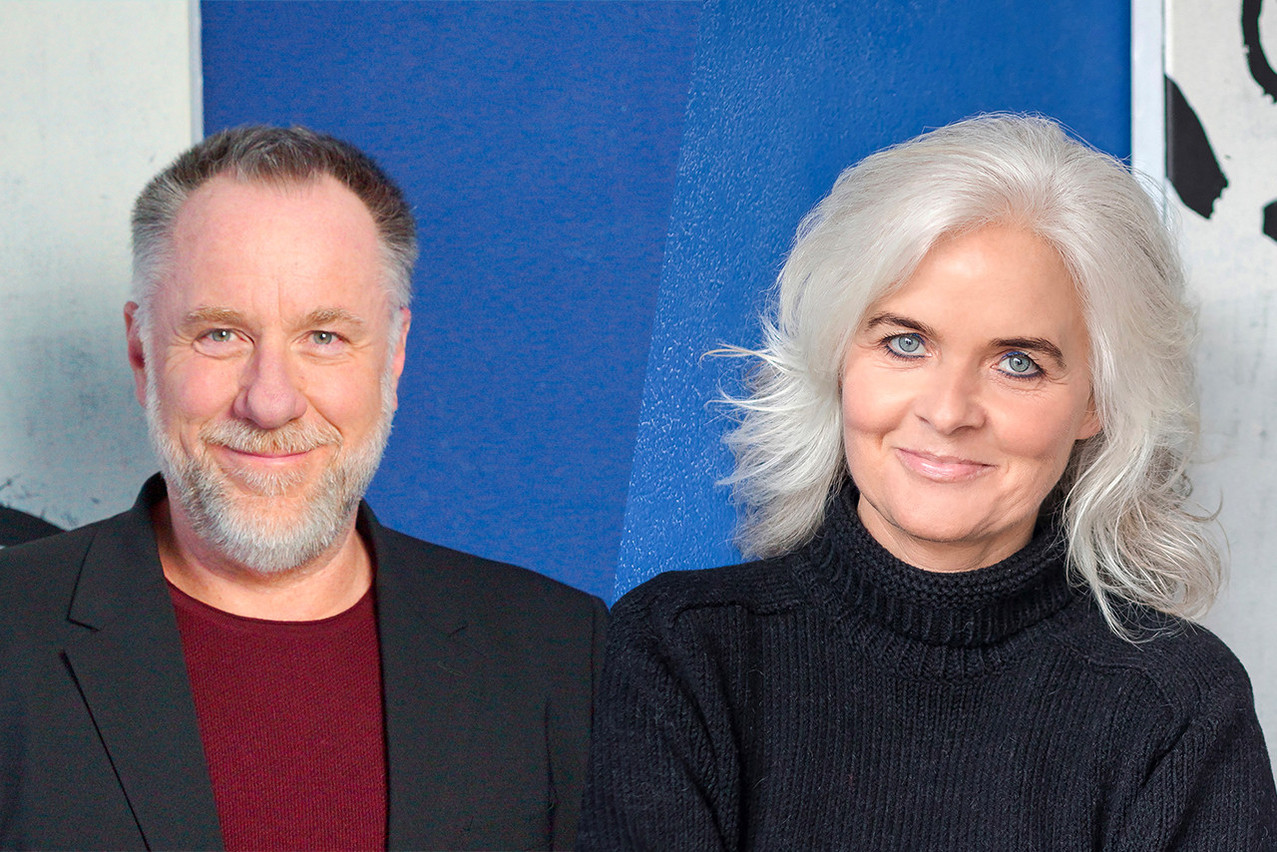Lydia Linna: “Confinement Cocktails: Great Cocktails and the Stories They Tell.” The title of your book refers to the lockdowns during the covid-19 pandemic and was born during this period. How did the idea develop?
Daniel Eischen and Françoise Reuter: Ever since the early 2000s, our jobs have allowed us to travel a lot to major cities around the world, so we were able to witness what is called today “the craft cocktail renaissance.” Mixologists around the world started rediscovering pre-prohibition cocktail recipes, improved or adapted them and opened modern day speakeasies ensuring inspiring drinking experiences. Drinking cocktails at hidden bars was a huge hype at that time and still is today.
We loved it. And we decided to start mixing drinks at home as well. We did so for over 10 years before covid forced us to stay at home. On the first day of the lockdown, we were wondering what we could do to document this exceptional period ahead of us. And we realised that over the past years we had heard so many cocktail stories from people around the world, discovered so many exciting places and learned so much about mixing cocktails…
It was the right moment to share all of this. We used Instagram to share every day--for as long as the confinement would last--one cocktail recipe and one story that went with it. And we would dedicate it to friends that we were not able to meet at that time. We thus started a global conversation on travel, drinks and friendship. Deciding to write a book about this time came naturally.

The gin blossom uses gin, vermouth blanc, apricot eau-de-vie, orange bitters and an orange twist for garnish. Photo: Daniel Eischen, Françoise Reuter
This is your first publishing project. What would you say were the most challenging and fun parts of the process?
Wow! There were many highs and lows. First of all, we needed to find some time to collect our ideas and start the writing process, whilst having our advertising agencies to run.
I would say that the photo shooting was the most challenging aspect of the book. We decided to do the shooting ourselves, although we knew that would be a tough job as cocktail photos are normally of very high quality. And we absolutely wanted to align with that benchmark.
The light, the right frost on a glass, the consistency of the foam on a drink... It is all a question of timing and experimentation. To illustrate this: for our final photo of the Express Martini, we had to start over four times four different days. But we love the final picture of the drink.
The book features 48 original and adapted cocktail recipes. Do you have a particular favourite?
It’s like your children. We love them all. You must be in the mood for a specific cocktail. Some are more boozy, others more complex. They may be sweet or sour. On certain days, there is nothing better than a simple Vodka Martini with an olive.
But if we had to pick one, it would be a cocktail family: the Negronis. Such a simple drink mixing equal parts of Campari, sweet vermouth and gin. But it is more than a drink. You can create dozens of variations on the same drink template, inheriting the Negroni principle but yielding totally different results. You just switch ingredients, like using tequila or mezcal instead of gin, suze for Campari, lillet for vermouth, and so on. You can spend days discovering new Negroni riffs, like the White Negroni or the Boulevardier.

The Camigroni cocktail features bourbon, vermouth blanc, Campari, simple syrup, chamomile flowers and chamomile bitters. Photo: Daniel Eischen, Françoise Reuter
Do you have any other gastronomy-related publishing projects in the pipeline?
Right now, we are totally excited about the release of our book. We want it to become a multimedia experience, so we are active on all social media channels and will continue creating original content for these channels in order to create a community and discover all aspects of mixed drinks, food pairing, the selection of ingredients and mixology techniques.
And, of course, we have plans for a second cocktail book. We love sharing stories and getting people excited about new discoveries.
Anything else you think readers should know?
Absolutely. Over the years, we talked to a lot of people about drinking cocktails. There’s often a fear that cocktails make you drunk or that they are too heavy on alcohol. Of course, like with beer or wine, you can get drunk if you have too many of them. And that is what we underline many times in the book. Drink responsibly. Never drink and drive.
If you love taste and discovering special ingredients and mixes, cocktails are a great experience to have
It should be a genuine pleasure, not a competition. If you mix them well, they can even be pretty low on alcohol. So, I think, if you love taste and discovering special ingredients and mixes, cocktails are a great experience to have.
You can start your journey with things you already know. Take a gin & tonic. Drop the tonic. Add some liquid sugar and lime juice. You have a gin sour. Explore further by adding an egg white and shaking the drink. You’ll have a frothy gin sour. And slowly you are becoming a Confinement Cocktail aficionado.
Written and designed in Luxembourg, “Confinement Cocktails: Great Cocktails and the Stories They Tell” is published by Op der Lay s.à r.l. and will be available as of 4 December in most bookstores. It’s now available online ().
